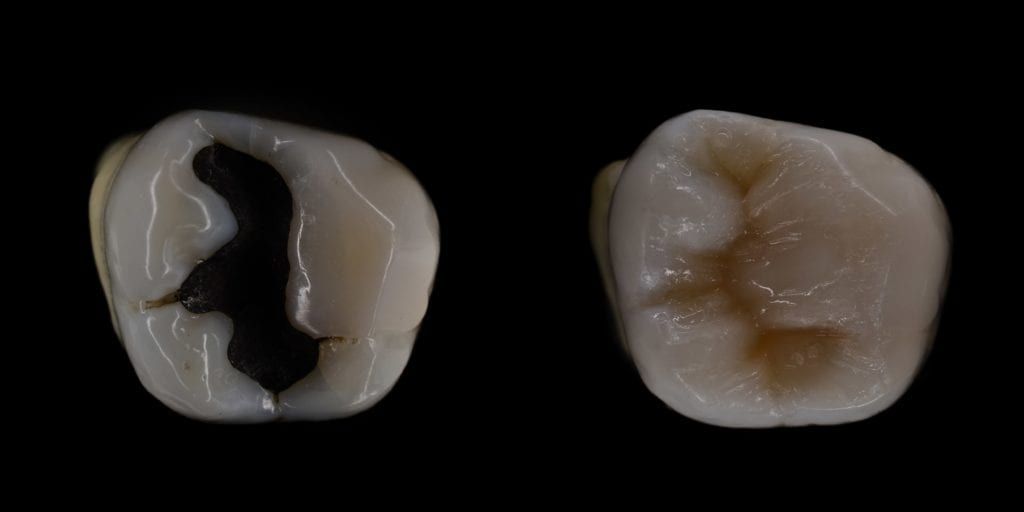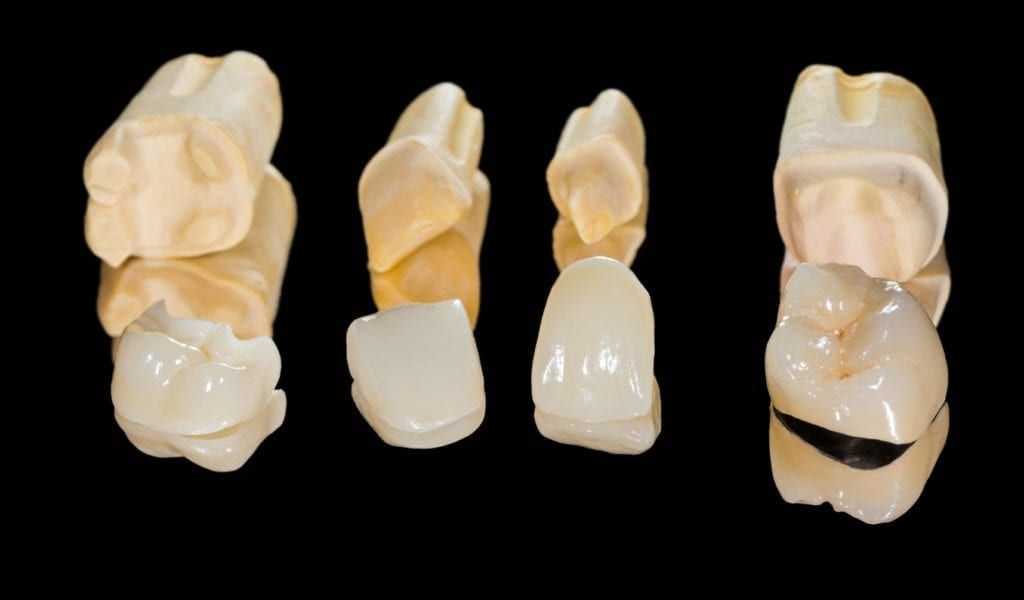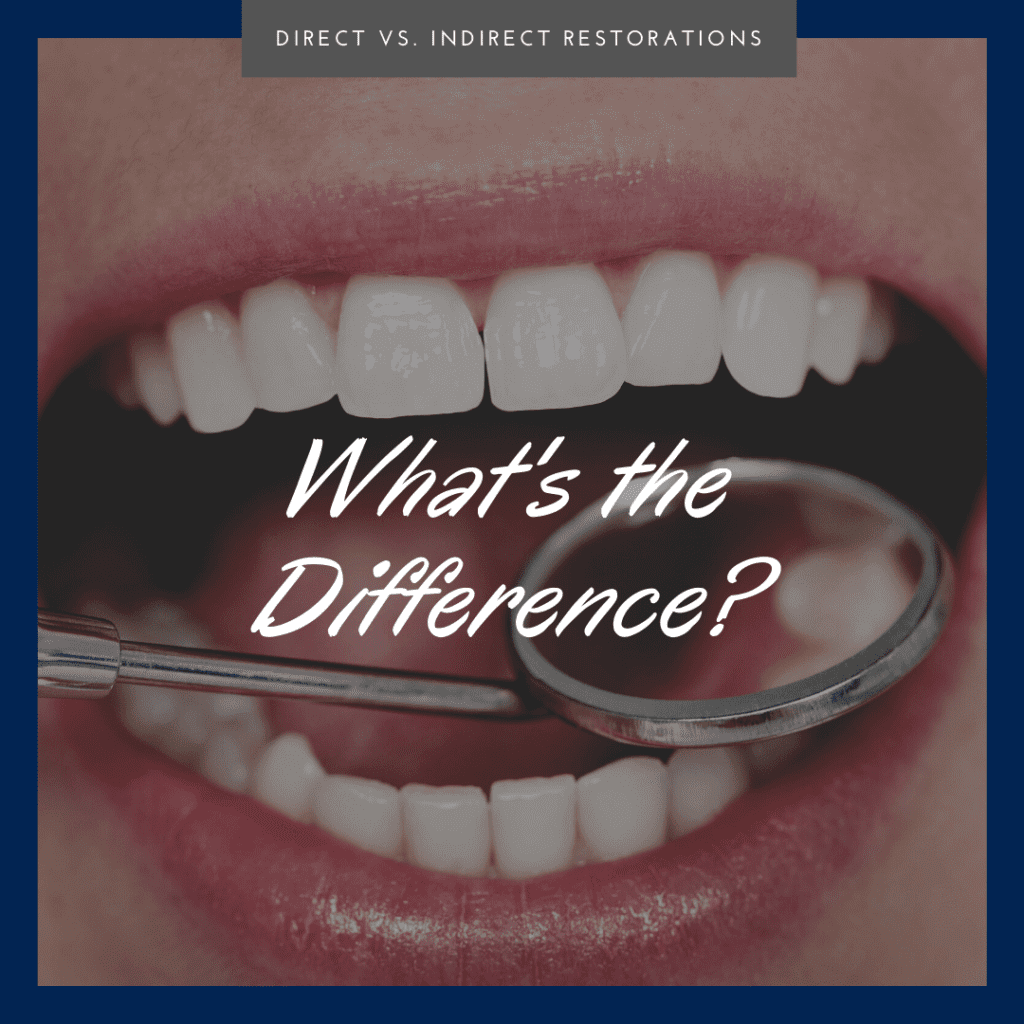Did you know that all the restorations your dentist fabricates can be categorized as either being direct or indirect? These two categories of dental restorations are used to restore damaged or decayed teeth, albeit slightly different ways depending on the type, location, and severity of the dental issue. Understanding the difference between these two types of restorations will allow you to make a better decision in which treatment is ideal for you.
Direct Restorations
Like their name suggests, direct restorations can be fabricated directly in the patient’s mouth. This means that they can be completed in a single dental appointment since they don’t require a dental laboratory to fabricate the restoration. Additionally, direct restorations do not require the use of a temporary or provisional restoration since they are complete once the appointment is over.

The most common type of direct restoration are composite fillings. Composite fillings use composite resin to fill in small to medium areas of decay. To place a composite filling, the decayed tissue must first be removed, then the remaining cavity is filled with a composite resin gel. This soft composite resin is then hardened into place one layer at a time using a curing light and the final layer is shaped and polished to blend in with the rest of the natural tooth structure.
While composite fillings use composite resin to restore small to medium areas of decay, composite bonding is used to restore small to medium areas of damage, such as cracks or chips. Composite bonding can also be used to fill in gaps between the teeth. The composite resin used for composite bonding is applied in the same way as a composite filling. Both composite fillings and composite bonding is complete at the end of your appointment, meaning that you can immediately return to your normal routine and won’t have to worry about following any special guidelines.
Indirect Restorations
While direct restorations can be completely fabricated inside the patient’s mouth, indirect restorations need to be fabricated outside of the mouth, either in a dental laboratory or with an in-office milling machine. Oftentimes, this means that indirect restorations take at least two dental appointments to complete. Crowns, bridges, inlays, onlays, and veneers are all examples of indirect restorations.

Since indirect restorations are typically larger than direct restorations and require the use of dental adhesives, your natural tooth structure will also need to be prepared to accommodate an indirect restoration. The amount of modification will depend upon the extent of the damage or decay, as well as the type of indirect restoration being placed. For example, veneers usually require the removal of a thin layer of enamel, while a dental crown requires the tooth be reduced in size.
During your first dental appointment, your tooth will be prepared for the desired indirect restoration, then an oral scan or dental impression will be taken of your mouth. This information will be sent to the dental laboratory or in-office milling machine to fabricate your permanent restoration. In the meantime, you will be fit with a temporary restoration to protect your tooth until your permanent restoration can be placed. Temporary restorations are not as strong, therefore you will need to be careful until you have your permanent restoration. Permanent restorations are made out of durable dental materials that can withstand the forces of chewing and that usually last around 10-15 years.
Overall both direct and indirect restorations offer restoration options for damaged or decayed teeth. Since direct restorations can be completed quickly and don’t require extensive enamel modification, they are generally used for small to medium areas in need of restoration. For larger areas that need to be restored, indirect restorations are usually used since they are stronger and can provide more resilience against the forces of chewing. However, indirect restorations also require multiple dental appointments and the use of a temporary restoration due to their fabrication process. Ultimately, your dentist will help you to determine what type of restoration is right for you.


